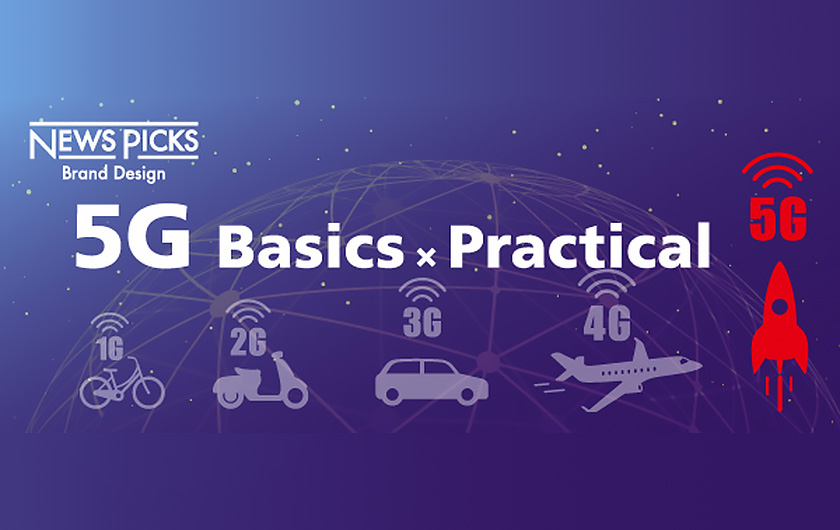Private 5G
Fujitsu / July 12, 2023
While we’ve seen the rapid consumer adoption of 5G services, the equivalent adoption of Private 5G, the variant of 5G designed specifically for the needs of enterprises, has proved to be much slower. As a result, many organizations remain unsure when they should commit to investment in Private 5G network technology.
Now is the time for Private 5G adoption
Disruption
Firstly, let’s understand why Private 5G adoption has been far slower than originally expected.
The market disruption caused by the COVID-19 pandemic has undoubtedly been a key factor. The original adoption forecasts were made before the pandemic. In light of the pandemic, many organizations were forced to refocus on urgent, short term operational and cashflow pressures, causing more strategic projects, such as those relating to Private 5G, to be deferred.
Inevitably, the pandemic also reduced competitive pressure to implement new Private 5G-related use cases, as competitors were also inevitably focused on the same COVID-19 driven business challenges.
More recently, the spike in energy prices experienced following the Russian invasion of Ukraine has also disrupted industrial enterprises, causing many to reduce investment budgets.
Forecasts
Despite Private 5G adoption being slower than previously anticipated, most analysts continue to predict strong market growth for Private 5G, with projections of 20% to 30% per year until 2030. Indeed, several current investment indicators support these forecasts.
Germany has been one of the pioneers in the development and rollout of Private 5G networks, and one of the first to offer Private 5G frequency operating licenses to enterprises. As a result, the number of new Private 5G frequency operating licenses issued to enterprises has become a key indicator of growth, with Bundes Netz Agentur now publishing a monthly report on new licenses being granted across Germany.
After initial strong growth in 2019 and 2020, the number of new licenses stalled in 2021, largely as a result of the global disruption caused by the pandemic. However, since then, numbers have been increasing significantly.
The slowdown in 2021 also reflected an element of market maturity, as most of the license applications to that point had been from university and research environments. Indeed, across Germany, most applications had been associated with state-funded R&D projects.
However, through 2022, Bundes Netz Agentur reports that the majority of new Private 5G license applications originated from business enterprises, with no fewer than 265 German companies and institutions being granted permissions to operate their own Private 5G networks.
So, is now the right time to invest in Private 5G network?
In most cases, enterprises invest in Private 5G networks so that they can deploy new or enhanced solutions that require the dependable, high speed, low latency networking that only Private 5G networks can provide.
In reality, therefore, most business cases for Private 5G adoption are actually driven by a primary business case for a new or enhanced use case solutions that requires Private 5G technology to support it. This master business case is typically driving the timing for Private 5G adoption.
Secondary Adoption
Once an organization has invested in implementing a Private 5G network to support a primary use case, it is not unusual for them to then rapidly adopt further use cases that also require a Private 5G network or are enhanced by having one.
For these organizations, this secondary adoption both accelerates and increases the return on investment of investing in a Private 5G network.
We have WIFI, so do we need 5G?
WIFI will remain the dominant wireless networking standard to meet an organization’s general networking needs. Indeed, the latest WIFI 6e networks have the potential to provide high speed, lower latency networking similar to Private 5G networks.
However, there is a catch. WIFI networks operate in an unlicensed and shared public spectrum. This spectrum is heavily used, with high levels of interference not just by other WIFI users, but also by a range of other applications. In the real world, this often significantly degrades the performance of WIFI users and makes delivering stable and reliable low latency and high bandwidth extremely challenging and problematic. In addition, WIFI networks can struggle to support the high density of devices found in modern IoT, device-rich, wireless environments.
In contrast, Private 5G uses a privately licensed spectrum, significantly limiting the level of network interference from other users and applications.
5G network technology is also based on cellular technology, enabling faster, more stable, real-world performance, even for a higher density of devices, compared to today’s latest WIFI networks.
This makes Private 5G the ideal choice for organizations with use cases that require networks that can deliver stable, high performance wireless networking to a high density of devices.
In addition, the 3rd Generation Partnership Projects (3GPP) standard now allows us to integrate WLAN with a 5G network into a subnet. In this way, interoperability between WIFI and 5G networks can provide a seamless handover of supported devices between networks, such as handsets able to support both technologies.
The definition of 3GPP from Wikipedia
Selecting your 5G network
5G networks are available as either a Public 5G networks or as Private 5G networks. Note that Private 5G networks are also sometimes referred to as Enterprise 5G (E5G), depending on where you live in the world.
Both Public and Private networks offer the same high bandwidth and low latency connectivity and the capability to support a high density of devices.
However, Private 5G networks have the advantage of allowing an organization to design networks that deliver the exact access and performance they need, as well as offering them the capability to retain full control over their data security.
Public 5G networks are operated by Mobile Network Operators (MNOs). Public 5G networks can be subscribed to by any individual or organization via an MNO. All subscribers receive access to the same network, infrastructure and security, with network availability and performance varying dependent on user location.
Private 5G (or E5G) networks, as the name suggests, are a private version of 5G, using the same technology but dedicated to use by a single enterprise or organization.
This allows organizations to design private networks that provide the exact connectivity, performance and security they need to support their individual needs and use cases.
Private 5G networks are also available in two forms - Independent and Dependent networks.
Independent Networks
Independent Private 5G networks operate in a spectrum licensed by the organization and can be designed to provide the exact performance requirements and coverage that the organization needs. This enables organizations to define their own service levels.
This also has the benefit of allowing organizations to implement more stringent security and to retain direct control over their data. Data can be stored on-site, with network slicing used to segregate high and low risk data on the network for example.
Dependent Networks
Dependent networks are provided to organizations by MNOs, using a 5G spectrum licensed by the MNO. This makes it convenient for organizations not wishing to license a spectrum themselves to operate a 5G network.
MNOs use network slicing to separate different customers’ traffic and to deliver predefined service levels to each customer. Customer data management is at least in part controlled by the MNO.
While dependent networks do not offer organizations complete control over their data and the security of their data, the security available will be adequate to meet many organizations’ needs.
In some countries, the licenses required to run independent Private 5G networks may not be available and organizations will therefore need to work with an MNO.

Source: Created by Fujitsu
Note: It is also technically possible to operate Private 5G networks in the unlicensed or public spectrum. However, this is not recommended as network performance is often poor and variable because of signal interference from other unlicensed spectrum users.
5G Security
Historically, mobile networks have needed to provide far more stringent security features than WIFI in order to manage the millions of subscriber devices operating on the same network securely.
5G includes a range of security anchor functions, including subscription permanent identifiers and subscription concealed identifiers. These functions can enable seamless and secure device reauthentication as a connected device travels between networks, which former 3G and 4G networks couldn't guarantee.
You can discover more about the Fujitsu approach and O-RAN security from the O-RAN ALLIANCE Security Focus Group (SFG) at:
Fujitsu Public and Private 5G Networks
Fujitsu offers open, integrated 5G network solutions to meet your connectivity needs for Public 5G or Private 5G networks.
Our end-to-end portfolio includes O-RAN compliant radios, virtualized baseband (Centralized Unit (CU) / Distributed Unit (DU)), network automation software, systems integration, optical and packet transport and maintenance and support programs.
We can customize every solution to suit the network needs and business goals of each customer and can scale to any size deployment as required.
Our secure 5G supply chain solution provides the logistics and fulfillment expertise needed to ensure swift, smooth execution of a rigorous deployment plan that gets projects done efficiently, cost-effectively and securely.
The Fujitsu 5G Network Solution
Software-Defined
・Virtualized RAN that can scale and adapt to match any public or private 5G deployment
・Service-aware, cross-domain control and orchestration
・Simple operation and service creation with necessary SLA per use case
・Cloud-native IoT
Open
・Open hardware interfaces and software to eliminate vendor lock-in
・Can be customized for any operational environment
・Rapidly enables new network digital transformation use cases
・Self-supported and Fujitsu-supported options
Ecosystem
・Multivendor selection offers best-of-breed hardware and software
・End-to-end solution, coordinated from inception to completion through a single, certified project manager
・Freedom to mix and match components according to use case
・Support from Fujitsu network integration experts
Fujitsu is also combining Artificial Intelligence (AI) and Machine Learning (ML) with Radio Access Network (RAN) technology to create more environmentally friendly and operationally efficient 5G networks.
Fujitsu is also at the forefront of developing the next generation of 6G networks.
https://www.fujitsu.com/global/about/research/technology/6g/
Conclusion
It’s now the right time to talk to the 5G experts at Fujitsu.
We can help you explore when the time is right for you to introduce a Private 5G network and what form of 5G network will work best for you.

Editor's Picks












